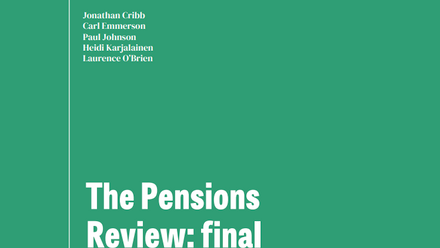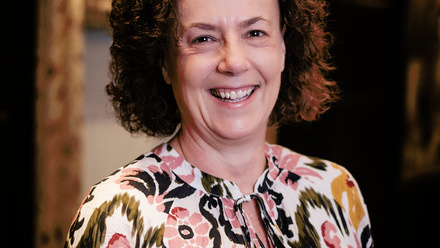10 things employees should consider before transferring out of a defined benefits scheme

In the past, the majority of pension savers were members of a defined benefit (DB) pension scheme also known as final salary schemes. Poor working and living conditions meant that retirement tended to only be for a few years, and certainly not the twenty, thirty and even forty years that are the norm nowadays.
Due to this, DB schemes have become increasingly expensive to run as the pension has to pay out for longer which is putting a lot of pressure on these schemes. As a result of the increasing longevity (people living longer), we have seen DB schemes adopt a number of changes to try and contain this increasing cost.
The most drastic action though has been to offer members pay-outs to leave the scheme through enhanced transfer values. To get this an individual would need to transfer their DB scheme to a defined contribution (DC) scheme. But is this a good idea?
Below are the top 10 things employees should consider before transferring out of a DB scheme:
1) Is the cash really needed?
Employees should make sure they have a purpose for the cash, drawing on pensions has tax implications; usually the first 25% is paid out tax-free but the remainder is taxed at the individual's marginal rate. Additionally, if it simply sits in a bank account it may be subject to inflation risk as the cost of living is likely to increase.
However, transferring out may be appropriate for someone who does not require dependent benefits, is in significant ill health, or someone who requires a large cash sum to start a business or pay off debts which are creating life pressures. But even these are not definitive reasons for doing so.
2) Is the paperwork correct?
We have heard of individuals receiving paperwork with confusing pension income figures from historic schemes. This is because these schemes tend to quote the pension entitlement at the date the member left their employment and became a deferred member.
This could have been many years ago and with deferred pensions benefitting from annual inflationary increases, the actual pension entitlement at the date of the statement could in fact be a lot higher. This makes a big difference as to whether or not the transfer value offered looks a good deal.
3) Compare transfer value against annual income
A simple calculation is to compare the cash equivalent transfer value against the ‘current’ annual pension entitlement, not the pension at the date of leaving the scheme, to find out how many years annual income would need to be received before reaching the transfer value offered.
For example, if a DB annual income guarantee is £1,355.58 and the transfer value is £27,384, then the conversion factor would be twenty times (27,384/1,355.58 = 20.20). This should be taken into account when considering if it’s a good deal or not.
However, it should be noted that this is not an accurate definition of ‘value’; the annual pension usually increases each year to maintain its purchasing power (indexation) but at the same time, it’s unlikely individuals are going to leave the money uninvested, earning no return. As mentioned above, the tax implications also need to be considered.
4) Don’t forget the perks
Most DB schemes have very good benefits. Often they include 50% for a spouse’s pension (upon death, either before or after a retirement date). Some offer increases of up to 5% on the deferred pension until the point at which benefits are taken (to help keep the values in line with inflation), and then provide inflation proofing once in payment.
Others also have an element of death benefits in payment if the policy holder passes away within five years of receiving benefits. Some DB scheme members may also be entitled to ‘scheme protected tax-free cash’ higher than the standard 25%. This benefit would be lost if transferred into a DC arrangement, unless transferred under certain circumstances.
5) Compare the value against an annuity
Employees should look at what kind of pension fund would be needed in a DC scheme to buy a similar income to those guaranteed by a DB scheme. ** For example, a pension transfer value of £37,000 offered in lieu of an income of £1,500 would actually cost £82,000 to buy an annuity for the same rates and perks as outlined above.
This is subject to needing a joint life annuity paying for a spouse’s pension, taking it from age 60 and including indexation, which is an expensive addition to any annuity.
6) Check the Guaranteed Minimum Pension (GMP) value
The GMP is the minimum pension value which an occupational pension scheme has to provide for those employees who were contracted out of the State Earnings-Related Pension Scheme (SERPS) between 6 April 1978 and 5 April 1997.
The amount is said to be 'broadly equivalent' to the amount the member would have received had they not been contracted out. This valuation is rarely up to date on transfer value statements, as this is not normally calculated until retirement.
Depending upon the scheme rules and when they are left, GMP increases could be as high as 8.5% p.a. fixed. This figure applied to some schemes if an individual left before April 1988, some 28 years ago!
The compounding effect of over 28 years is to increase that element of the GMP pension by 9 times. Using an up to date value of GMP would make transferring out even less attractive.
7) Changing transfer values
DB transfer values can fluctuate year to year based on a range of economic and demographic factors such as investment performance and mortality rates. This can impact the underlying scheme value and lead to varying transfer calculations.
8) Transfer Value Analysis Systems (TVAs)
Calculating accurate transfer values is incredibly complicated and even financial advisers turn to their TVAs for guidance on how to value a DB pension. Employees may want to consider if they want an expert to do this for them.
9) What security measures are there?
Some individuals are worried whether their scheme is secure, and if it will be able to continue to pay out as promised. Transferring out may be something for them to consider if the scheme is in a precarious financial position but employees shouldn’t act in haste and should weigh up all options before making any decisions.
And although there is the PPF (pension protection fund) which will pay up to 90% of the pension value, there is an annual cap of £33,678.38 at age 65 and they may get much less than they had expected.
10) Are employees equipped to understand their options without advice
The rules stipulate that those with a DB pension value of over £30,000 will need to take regulated advice before transferring to a DC scheme. But for those employees with less who want to transfer out and do not have to take regulated advice, will they be able to get a good deal?
As outlined above, pension transfer documents are often unclear, full of jargon, and it is hard to understand the value of the actual benefits that will be given up. The average price to fit a new kitchen is £8,000, and very few people would choose to fit it themselves, so why would someone with little or no experience of pensions want to make a decision about a pension fund up to £30,000 without getting expert advice?
“In some cases, if individuals are seriously ill, or want to start a business and cash is more important than their long term income planning, it may be worth considering cashing in their DB scheme," says Jonathan Watts-Lay, director of Wealth at Work. However, in the majority of cases, an individual would be better off to leave it as it is and both the Financial Conduct Authority and The Pensions Regulator agree.”
This article was provided by Wealth At Work.






